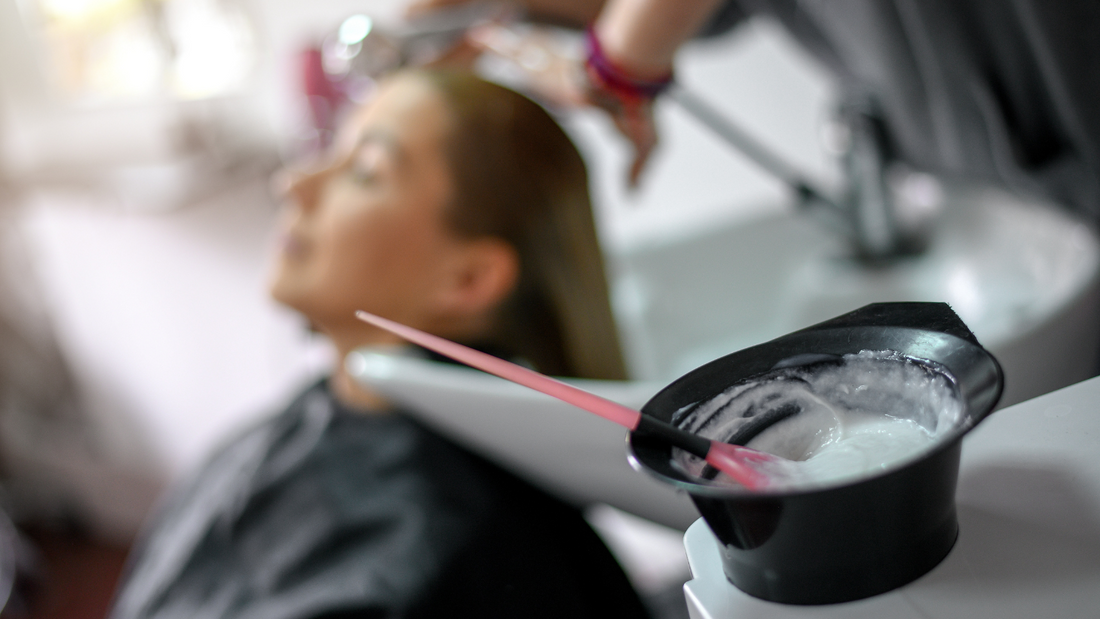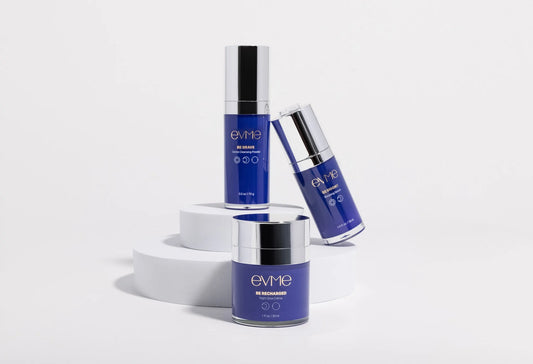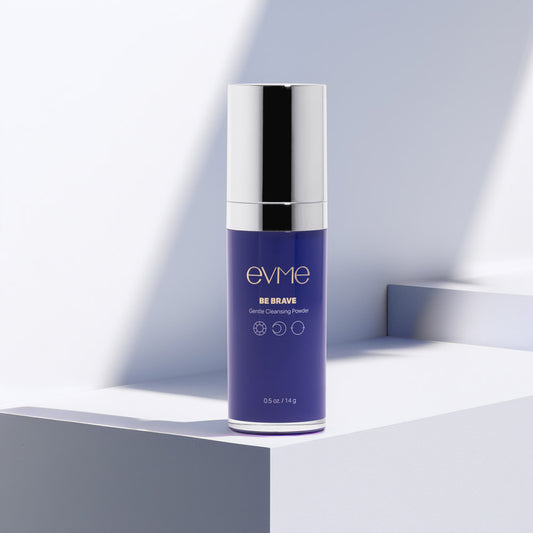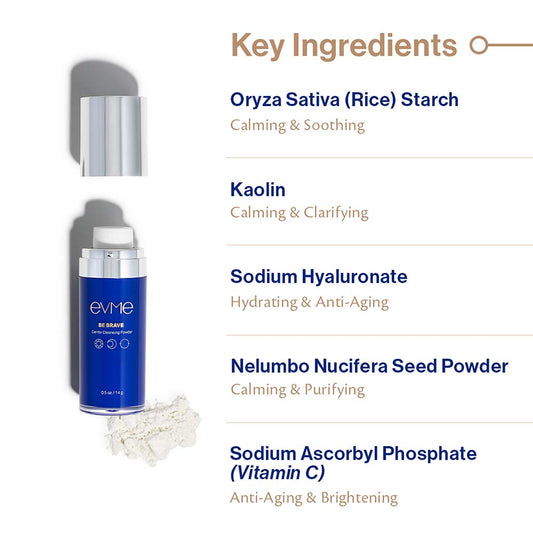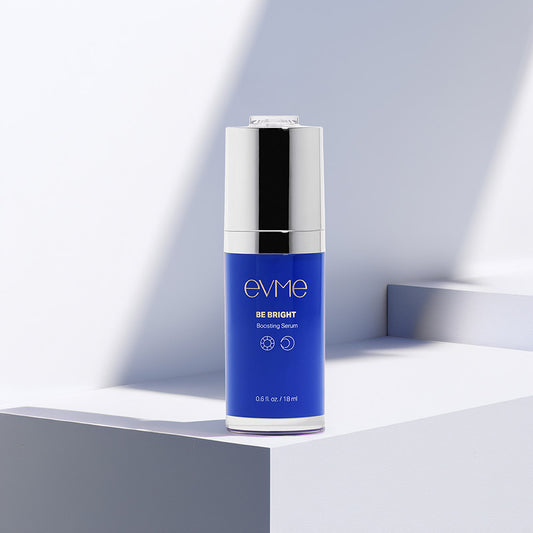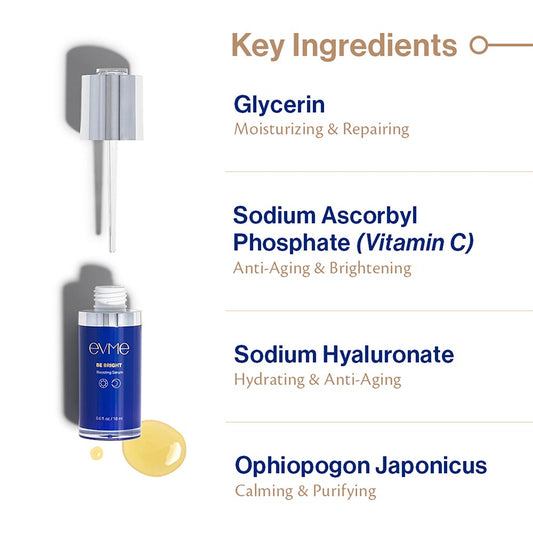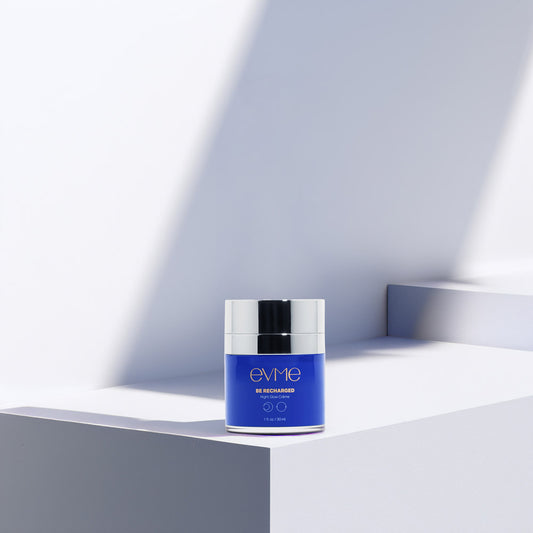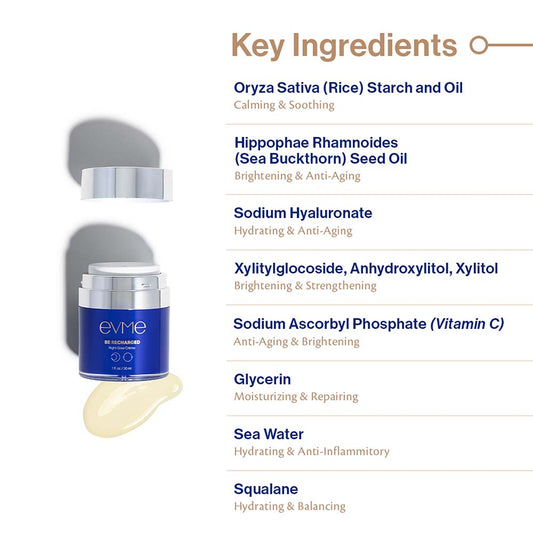Try Evme, allergist-created luxe skincare for sensitive and allergic skin.
Shop All ProductsWhat's the Deal with Fragrance Allergy?
December 08, 2022
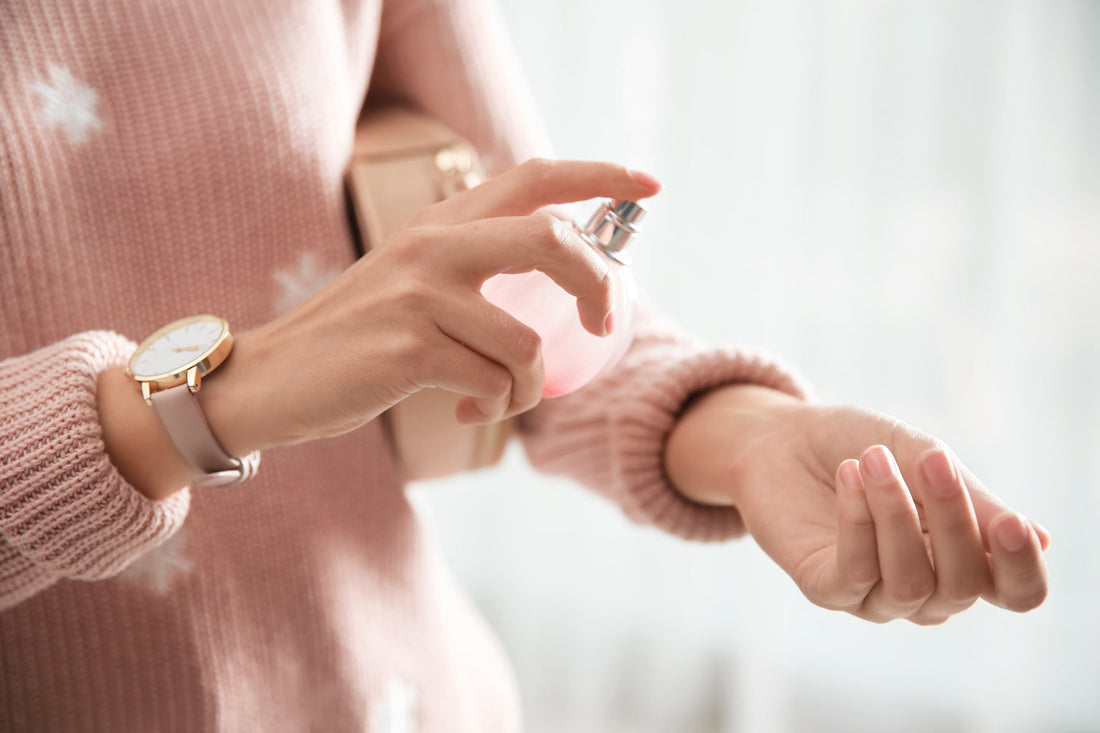
It is estimated that about 25% of people with sensitive and allergic skin may react to fragrances (based on patch test data).
We are exposed to fragrances on a daily basis—oftentimes without even knowing it! Contact with fragrances can occur not only from direct product application to the skin, but also through contact with a fragrance "contaminated" product, such as towels and pillows; contact with products used by people around you; and airborne contact.
Where are Fragrances Found?
Fragrance-containing products can include: perfumes/colognes/aftershave, deodorants, essential oils/diffusers/candles, fabrics (laundered with soaps, fabric softeners), flavors used in oral hygiene products (toothpaste, mouthwash, dental floss), household products (cleaners, detergents, disinfecting/room sprays), industrial products, and paper products (diapers, sanitary napkins, tissues, toilet paper) to name a few.
Where Do Fragrances Come From?
There are over 2,000 fragrances used in the personal care industry, which are split into two categories: natural or synthetic. Both have the potential to cause allergic reactions.
Natural fragrances are derived from organic materials, including plants and flowers. There are a variety of essential oils that are natural in origin that have been known to cause contact allergy.
Synthetic fragrances are created in a lab to mimic natural fragrances, often using less organic components, and are often a mix of several fragrances put together.
The most frequent culprits that cause fragrance reactions are:
- Linalool and limonene hydroperoxides
- Hydroxyisohexyl 3-cyclohexene carboxaldehyde
- Treemoss and oakmoss
- Isoeugenol
- Cinnamyl alcohol
- Cinnamal
There are additionally another 150+ fragrances that have been identified as causing contact allergy and the list is growing.
What Issues Do Fragrances Cause?
Fragrance can cause both irritant and allergic contact dermatitis. People who have sensitive skin often have a form of irritant dermatitis when it comes to fragrance. Eczema or atopic dermatitis can often be exacerbated by fragrances.
We often rely on labels like “unscented” or “fragrance-free” to help us understand if a product has fragrance in it. Unfortunately, these labels are not completely reliable. Even “unscented” or “fragrance-free”
products may sometimes contain a perfume or an essential oil to mask the unpleasant odor of a product.
How Do You Know if You're Having a Reaction to Fragrance?
Contact allergy to fragrances most often causes a rash on the hands, face, neck, and potentially armpit area. Although this reaction is most often characterized by redness, the typical signs of contact dermatitis, including dryness, flakiness, bumps, and vesicles (fluid-filled blisters), may also be present. Sometimes you may see patches of eczema in areas where perfumes are dabbed, such as behind the ears, on the upper chest, in the elbow flexures, and on the wrists.
Women are most likely to react to perfumes and deodorants, while men are most likely to react to deodorants and aftershave/colognes. Microtrauma from shaving can make contact allergy worse. Women are generally more likely to have fragrance sensitivity, and the likelihood rises above the age of 40.
In a recent study from the UK, 75% of patients who tested positive for fragrance allergies by patch testing were not aware of this allergy before. From this article, we learned that reactions to fragrances are more likely if you already suffer from sensitive or allergic skin.
Lack of Fragrance Regulation in the US
The EU has cautioned the use of 26 ingredients that they’ve identified as causing a majority of fragrance reactions. Shockingly, though, fragrances are not regulated in the United States.
These are the top fragrance allergens that have been identified in the EU and are now part of a restricted or banned category:
- Amyl cinnamal (a-amylcinnamic aldehyde)
- Amylcinnamyl alcohol
- Anise alcohol (anisyl alcohol)
- Benzyl alcohol
- Benzyl benzoate
- Benzyl cinnamate
- Benzyl salicylate
- Butylphenyl methylpropional (Lilial)*
- Cinnamal (cinnamic aldehyde, cinnamaldehyde)
- Cinnamyl alcohol
- Citral
- Citronellol
- Coumarin
- Eugenol
- E. furfuracea (treemoss) extract*
- E. prunastri (oakmoss) extract*
- Farnesol
- Geraniol
- Hexyl cinnamal (a-hexylcinnamic aldehyde)
- Hydroxycitronellal
- Hydroxyisohexyl 3-cyclohexene carboxaldehyde (Lyral)*
- Isoeugenol
- a-Isomethyl ionone (g-methylionone)
- Limonene
- Linalool
- Methyl 2-octynoate (methyl heptine carbonate)
* These are completely banned in the EU
Sometimes, fragrance ingredients can hide behind the generic words “flavor” or “fragrance,” since the FDA has granted leniency to ingredients considered to be part of a “trade secret.” Beware what’s behind these generic words, because you have no idea what you may be exposed to!
Even very small quantities of fragrances can trigger a skin reaction!
What You Can Do if You Have Reactions to Fragrance
You may not be able to control every aspect of your environment. But there are a few actions that you can take to help reduce your chance of experiencing a reaction to fragrances:
- Read product labels. This is the first step toward understanding what kind of ingredients you are getting exposed to. Use the ingredients listed above as a guide for some of the most reactive fragrances.
- Be wary of product claims. Be cautious of terms like “fragrance-free” and “unscented,” which may still contain fragrance components and have the chance to be reactive.
- Pay attention to products around you. Be aware of personal care products around you, including towels and pillows; contact with products used by people around you; and airborne contact with fragrances.
- Try Evme. At Evme, we have full transparency of our ingredients. We do not use any fragrances or fragrance derivatives, from source to shelf.
Recommended articles
Evme Sans-Allergenic Skincare Products
- Choosing a selection results in a full page refresh.



